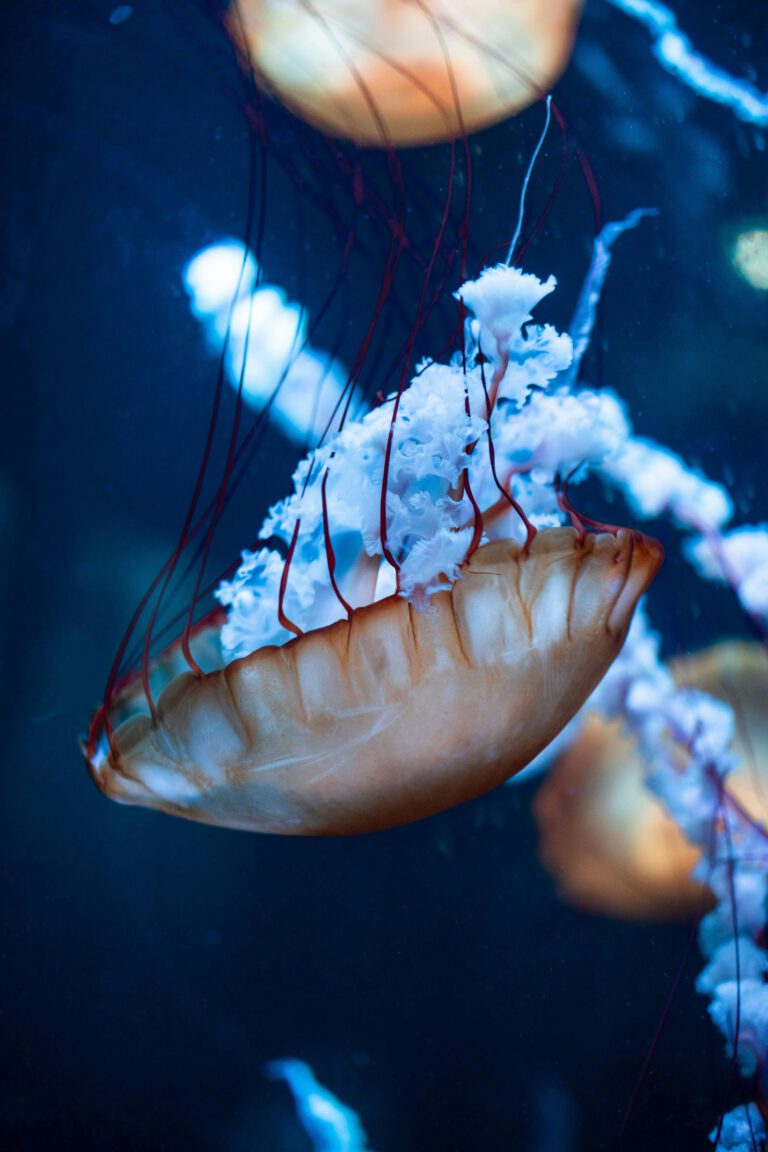Blue Mussels – Mytilus edulis

Blue Mussels (Mytilus edulis) - Blauw Mossel
- Taxonomy: The Blue Mussel belongs to the Mytilidae family, commonly found along coastlines worldwide. It is a bivalve mollusk, meaning it has two shells connected by a hinge.
- Species: Mytilus edulis is the most widespread species of mussels, but there are closely related species within the Mytilus genus, like the Mediterranean and California mussels.
- Reproduction: They reproduce by releasing sperm and eggs into the water. Fertilization occurs externally, and larvae develop before settling onto a hard surface to grow.
- Habitat: Found in intertidal zones and shallow waters, they attach to rocks, docks, and other underwater surfaces using strong threads called byssal threads.
- Diet: Filter feeders, they strain plankton and organic particles from the water. Blue Mussels play a vital role in maintaining water clarity and health.
- Conservation: Mussel beds are threatened by pollution, overharvesting, and climate change, which can disrupt their delicate ecosystems. Sustainable harvesting practices are important to their survival.
- Unique Anatomy: Have a strong shell and can close tightly to protect against predators. Their ability to filter large amounts of water helps maintain marine environments.
- Economic Importance: Blue Mussels are farmed and harvested for human consumption and are considered a delicacy in many cultures.
Blue Mussels: Guardians of the Ocean
When you think of marine life, creatures like dolphins, whales, and colorful coral reefs might come to mind. Yet, beneath the surface, humble but essential organisms like Blue Mussels quietly work to keep the ecosystem balanced. These small but tough mollusks play a huge role in filtering water and providing habitat for other species.
What Are Blue Mussels?
They belong to the species Mytilus edulis, one of the most widespread and commonly recognized mussels. These bivalves are found in coastal waters around the world, where they anchor themselves to hard surfaces. Using byssal threads, they hold fast to rocks, docks, or even other mussels, forming dense colonies called mussel beds. These beds create a rich environment for many marine organisms.
How Blue Mussels Filter the Ocean
One of the most important jobs of Blue Mussels is filtering water. Each mussel can filter gallons of seawater daily, removing plankton and organic matter. This keeps the water clean and helps control algae growth, which benefits the entire marine ecosystem. In return, the mussels get the food they need from the particles they capture.
Reproduction and Growth
Blue Mussels reproduce by releasing eggs and sperm into the water. Fertilized eggs develop into free-swimming larvae, which later settle onto a surface to grow into adult mussels. Over time, these mussels can create entire beds, offering protection and food to other marine life, such as crabs and fish.
Importance of Sustainable Practices
While Blue Mussels are resilient, they face threats from pollution and climate change. Increased water temperatures and ocean acidification affect their growth and reproduction. Additionally, overharvesting mussel beds can harm the local marine environment. To protect these mollusks, it is vital to support sustainable mussel farming and responsible harvesting practices.
Conclusion
Blue Mussels may not be as flashy as some marine animals, but they are vital to maintaining healthy oceans. Their ability to filter water and create habitats for other species makes them an essential part of the marine ecosystem. By learning more about Blue Mussels and supporting sustainable practices, we can ensure these tiny guardians of the ocean continue to thrive.







